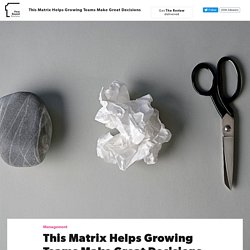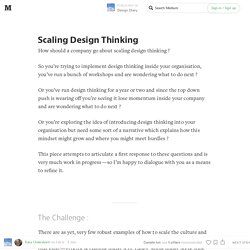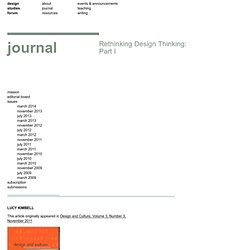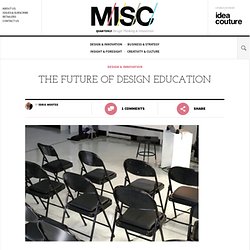

Gamestorming. This Matrix Helps Growing Teams Make Great Decisions. Gil Shklarski has spent his career solving incredibly complex problems.

Whether it was making Facebook safer or working on infrastructure for Microsoft’s maps, he’s always approached his work with a mathematician’s ability to break enormous missions into problem sets to be solved. Five years ago, he joined Flatiron Health as head of technology, and was tasked with building the oncology industry's first cloud-based software platform to manage clinical care and learn from the experience of every patient. Sounds like a big enough challenge — but scaling the technical team to do it quickly proved to be a massive undertaking on its own.
When Shklarski came aboard, the company was four employees building tech used by one clinic. Two years later, headcount was 135, serving 200 clinics, and he confronted a problem with the potential to undermine it all. It wasn’t immediately clear how he’d turn things around. Xanax for Decision-Making The Matrix There are two types of decisions: Community Design and Products - Product Mindset.
The Case Against Empathy. The following is an excerpt from The Way to Design, a guide to becoming a designer founder and to building design-centric businesses.

It was adapted and reprinted with the author’s permission. I’ve had my fill of empathy. Or to be more specific, all the talk of empathy in recent years. Don’t get me wrong. I’m all for a human-centric approach to design, one that puts users first and attempts to understand how the world looks to them. “Empathy” was Ideo founder David Kelley’s shorthand for in-the-weeds ethnographic research. First of all, empathy as an emotion has its limits, as Yale psychologist Paul Bloom has argued persuasively. Moreover, in my own extensive experience working with designers—I was a product designer at Ideo for many years, have invested in many designer-founded startups, and was the lead investor in Designer Fund—it’s struck me that decisions are often made at the end of sentences that began with phrases like “I believe” or “I feel.” Design Thinking. Welcome to the Design Thinking branch of the rethinked*annex database.

This is the virtual space where I (Elsa) collect all things Design Thinking: videos, books, graphics, interviews, etc. How to recognize Design Thinkers ~ Since Roger Martin and others hijacked the term ‘designthinking’, there is an ongoing dispute. Two thought worlds exist and possibly these can be united by laying bare the essential characteristics of a ‘design thinker’. via Team Cognition, published October 30, 2012. Rethinking Design Thinking, Part I ~ The term design thinking has gained attention over the past decade in a wide range of contexts beyond the traditional preoccupations of designers.
The main idea is that the ways professional designers problem-solve is of value to firms trying to innovate and to societies trying to make change happen. Design Thinking for Educators. Design Thinking in Schools K12 Directory. The Design Sprint — Google Ventures. The sprint gives teams a shortcut to learning without building and launching.

The sprint is a five-day process for answering critical business questions through design, prototyping, and testing ideas with customers. Developed at GV, it’s a “greatest hits” of business strategy, innovation, behavior science, design thinking, and more—packaged into a battle-tested process that any team can use. Working together in a sprint, you can shortcut the endless-debate cycle and compress months of time into a single week.
Instead of waiting to launch a minimal product to understand if an idea is any good, you’ll get clear data from a realistic prototype. The sprint gives you a superpower: You can fast-forward into the future to see your finished product and customer reactions, before making any expensive commitments. This page is a DIY guide for running your own sprint. Dysfunctional Products Come from Dysfunctional Organizations. Producing great products isn’t just about creativity and execution.

It’s also about organizational alignment. Let me tell you a quick story. One of my alumni, Eli, recently finished a contract with a government transportation agency. She had been tasked with spending time with the agency’s customers – regular citizens – to identify usability issues in their mobile app. She had quickly discovered that the app was basically a trainwreck.
Scaling Design Thinking — Design Diary. The Challenge : There are as yet, very few robust examples of how to scale the culture and mindset of design thinking within a company retrospectively.

The examples that exist — Proctor & Gamble under A.G. Lafley, Apple under Steve Jobs, Intuit under Scott Cook are based on the CEO being believers in design and driving it into the deepest levels of their organisations. Development Impact and You. Design Thinking for Educators. Design & Thinking - a documentary on design thinking.
Designthinkers Academy. The New York Times Innovation Report. Innovation Masters Series - Design Thinking. Recent Articles. The Leaders of Visual Planning, Team Performance, and Graphic Facilitation for over 30 Years. Design studies forum › Rethinking Design Thinking: Part I. This article originally appeared in Design and Culture, Volume 3, Number 3, November 2011 Abstract The term design thinking has gained considerable attention over the past decade in a wide range of organizations and contexts beyond the traditional preoccupations of designers.

The main idea is that the ways professional designers problem solve is of value to firms trying to innovate and to societies trying to make change happen. This paper reviews the origins of the term design thinking in research on designers and its adoption by management educators and consultancies within a dynamic, global mediatized economy. Www.agileproductdesign.com/downloads/quickrefs/patton_design_studio.pdf. Remote collaborative sketching, brainstorming and design studio techniques. I’ve been facilitating design studios with collocated teams for years. Many, including me, have covered the benefits of collaboratively sketching new ideas and concepts with a cross-functional team. Recently though, I was tasked with bringing this exercise to a distributed team. With the product and user experience team in New York and the development team in Vancouver, it proved to be an interesting challenge.
What follows is a play-by-play of how we set up the exercise and executed as well as an analysis of the successes and failures of this first attempt. It’s worth noting that this was the team’s first design studio ever – which added another layer of complexity to the event. We gave the teams a brief heads up of what was going to happen and asked everyone to come to their individual conference rooms with their own laptops. Priming the pump with affinity mapping Since this was their first collaborative sketching session, we didn’t want to jump right into drawing. 6-up template [Jeff] The Designer Fund. Kendall College of Art and Design of Ferris State University. What does an innovation strategist do? The opportunity to become an “Innovation Strategist” catches people’s attention.

Since our initial posting for the role in Toronto, we’ve received over 120 resumes from dynamic, brilliant young individuals all interested in joining the Idea Couture team. From the outside looking in, innovation strategy sounds incredibly sexy (and it certainly looks good on a business card). But if you ask a typical applicant what exactly they think an innovation strategist does, what usually follows is blank stares, buzz words, or my favorite, “They strategize innovation”.
None of those are good answers. There’s nothing worse than expecting one thing and getting another. The Future of Design Education. Design schools have built up an expectation that they can equip students to tackle complex problems through the power of creativity alone.

They can’t. They don’t. And they continue to fool themselves with four big myths about creativity. UX STRAT’s Presentations on SlideShare. Strategic Design MBA Course Descriptions. Download the course schedule forJanuary 2013 - June 2015Cohort 1, Cohort 2, and Cohort 3 Course 1: Innovative Leadership Compare to traditional MBA courses: Leadership, Organizational Behavior This course addresses the skills, concepts, and mind-set that support leadership in complex, innovative organizations.

Google Ventures. A (Nearly) Complete Online Toolkit For Startups. When you’re launching a startup, what’s the one thing you need? Initial funds? Organization? A plan? Well, yes—but also tools. UX consciousness in business magazines. Last month, we published our research on the degree of "user experience consciousness" we found among the analyst firms. The results were quite interesting, so we've repeated our method to assess the UX consciousness of mainstream business publications. Here are the eight publications we chose, based on an informal poll of about ten colleagues who work at the intersection of business strategy and user experience: Harvard Business Review The Economist Business Week Fast Company Business 2.0 Inc.
Cusp Conference - Videos. Rethinking Design Thinking. Posted by Don Norman | 19 Mar 2013 | Comments (15) OK, I take it back. Well, some of it anyway. In June, 2010, I posted an essay on Core77 entitled "Design Thinking: A Useful Myth. " (Got a lot of responses, that one did.) Since my essay was posted, I keep encountering people who jump to solutions and who fail to question assumptions—engineers, business people, and yes, designers (and design students). I am here to say that I now have rethought my position. I've spent the last few months pondering the way designers work while I was hidden away, revising my book The Design of Everyday Things (DOET). Design thinking. Design thinking stands for design-specific cognitive activities that designers apply during the process of designing.[1] Overview[edit] Design thinking has come to be defined as combining empathy for the context of a problem, creativity in the generation of insights and solutions, and rationality in analyzing and fitting various solutions to the problem context.[2] According to Tim Brown, CEO and president of IDEO, the goal of Design Thinking is "matching people’s needs with what is technologically feasible and viable as a business strategy" [3] The premise of teaching Design Thinking is that by knowing about how designers approach problems and the methods which they use to ideate, select and execute solutions, individuals and businesses will be better able to improve their own problem solving processes and take innovation to a higher level.
Origins of the term[edit] Visual Thinking Archive.